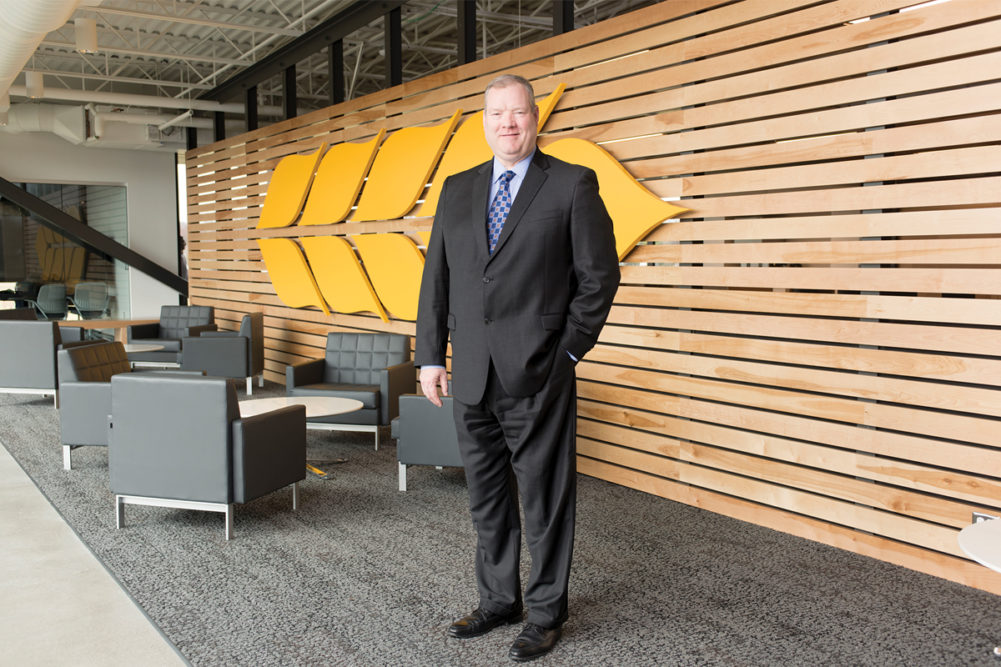MAUMEE, OHIO, U.S. — After more than a decade of partnership, The Andersons, Inc. and Lansing Trade Group, LLC are fully aware of the pros and cons of each other’s operations. Thus, the decision announced earlier this week that The Andersons would acquire the remaining two-thirds of Lansing equity that it did not already own seemed like a logical move for the parties involved.
“Lansing is a company that we know very well after 15 years of partnership,” Patrick E. Bowe, president and chief executive officer of The Andersons, said during an Oct. 16 conference call with analysts. “By fully acquiring and merging Lansing into The Andersons, we will create a business of complementary grain and ingredient assets and trade flow with greater scale that significantly expands our presence in agricultural marketplace.”
In an investor day conference in December 2017 The Andersons outlined the criteria the company applies to evaluate merger and acquisition opportunities. Bowe said Lansing Trade Group checked all the boxes.
“First of all, we want to own assets that are core or adjacent,” he said. “We have a long history together with Lansing, which owns complementary assets and business lines. The fact that the Lansing assets don’t overlap ours geographically is an added benefit.
“We also want any acquisition to improve our ability to meet customer needs, and Lansing enhances the scale and scope of our trading activities by growing our trading operations and allowing us to trade new commodities. In addition, Lansing’s highly complementary customer base will give us opportunities to sell our Freedom risk management tools to more farmer customers. The acquisition also increases our footprint and penetration in high-growth specialty food and feed ingredients markets, creating the opportunity to diversify our activities outside of traditional products and geographic regions. The combined scale will allow us to drive efficiencies across these supply chains. We expect the transaction to be accretive within a year. The transaction also provides an attractive return on invested capital with a good payback period, thus, meeting all of our financial criteria.”
After closing, Lansing will be integrated with The Andersons’ Grain Group. The combined operation will be jointly led by Corey Jorgenson, president of The Andersons Grain Group, and William E. Krueger, president and CEO of Lansing Trade Group. Bowe said Krueger will run the commodity trading part of the business while Jorgenson will run originations, which includes working on the front-end merchandising with farmers. Krueger and Jorgenson will work together to co-manage the food business, Bowe said.
“What Lansing brings to The Andersons is a larger grain and feed ingredient merchandising platform with a larger Western presence that’s very complementary to The Andersons’ mostly Eastern footprint,” Krueger said. “We’ve concentrated more on merchandising and trading than on operating grain facilities. We’re also merchants of DDGs and merchandise a total of approximately 4 million tons of feed ingredients annually. We have a successful pet food business, specialty grain business and frac sand business that handles nearly 3 million tons annually. Our gross profit for the 12 months ended Aug. 31, 2018, was split 45% in our grain division; energy at 30%; and feeding specialty ingredients at 25%.”
Asked by an analyst where the potential cost savings from the merger will come from, Krueger said the companies feel good about the opportunities in front of them.
“Obviously, the overhead when you run two separate companies, there are some things that are right up front that you can take benefits from that are just simple,” he explained. “Everything from audits to subscriptions to a board of directors to licenses and things like that there are, probably — obviously, we will consolidate our systems. That will take longer. Our Grain business is fully operational on SAP. That’s something we won’t do day one, but we see that longer term, we will bring them onto our system, year two, year three, and expect to see more efficiencies and people efficiencies when we get that done.
“Early on, we think our synergies will be offset by some of the cost to acquire them early in the process. So we won’t see a big benefit in ‘19, but we expect to see a good benefit in ‘20. We set a target of $10 million. We worked with an outside partner, AlixPartners, who is a consultant who’s been working with us for several months. We’ve identified 12 work streams and have paths for synergies in each one of those work streams. We don’t see any need to jettison any assets, so the businesses are very complementary that way. So there won’t be any sales per se, but there will be efficiencies we’ll generate along the way.
“That doesn’t include potential for top-line growth, … and I mentioned one was selling our Freedom risk management products. There’s other opportunities for growth synergies in our food segments that overlap and other areas that we can drive potential top line. We increased dramatically our top line with this acquisition, almost 3x, and making us a $9 million to $10 million company in revenues. In the Grain business, we don’t pay a lot of attention to revenues because they go up and down with commodity prices. But this puts us on a growth path, and we’re pretty excited about what we can do down the road on the top line as well.”






